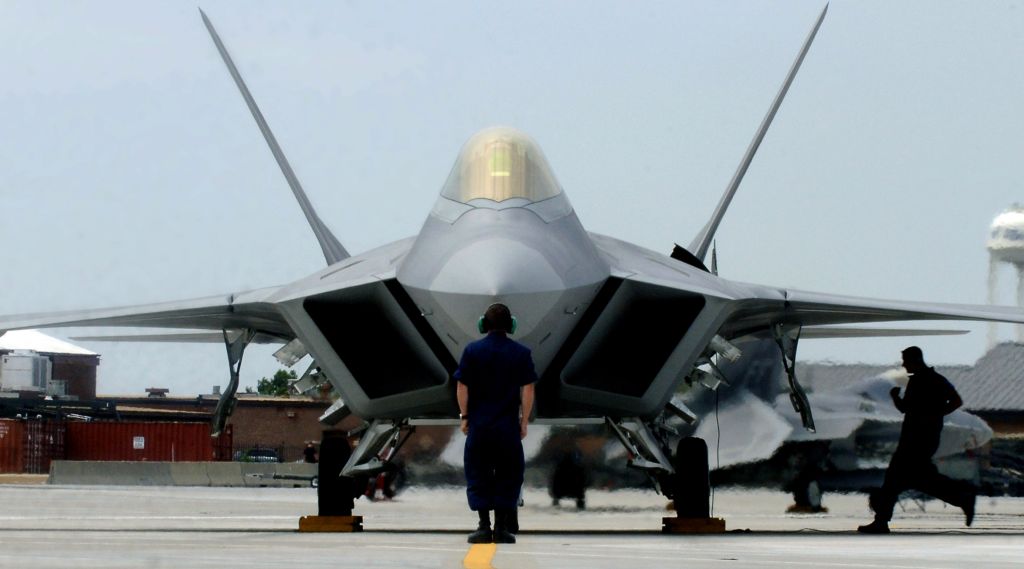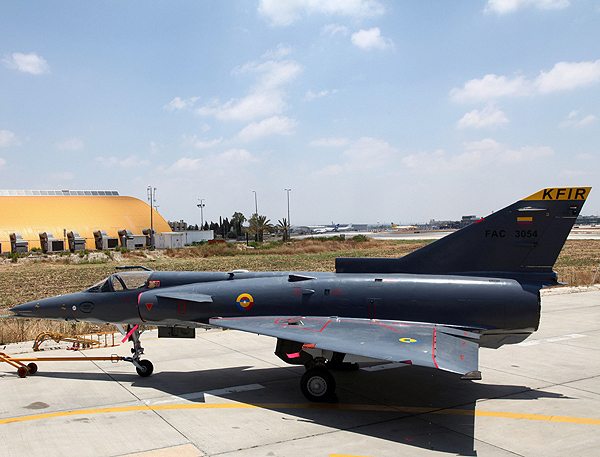The Pentagon said this week that it has found the cause of health problems that are plaguing pilots of the F-22 stealth fighter jet and compromising their ability to fly. According to the Department of Defense, the mystery can be traced to malfunctions in the pilots’ air supply equipment.
But how does that explain the fact that members of ground crews have exhibited similar symptoms?
In response to questions from the Project On Government Oversight (POGO), Air Force spokesmen said that maintenance workers have gotten sick for an entirely different reason: exposure to the jet’s engine exhaust.
“The incidents experienced by the maintainers are not connected with the physiological incidents experienced by the pilots,” 1st Lt. Sarah D.A. Godfrey, a spokeswoman for Air Combat Command, told POGO.
According to another Air Force spokesman, Lt. Col. Edward T. Sholtis, “The symptoms reported by maintainers have been attributed to breathing ambient air during periods in which environmental and flightline conditions increased the amount of engine exhaust present.”
Sholtis likened the exhaust to what people may experience in congested traffic but declined to elaborate on what exactly in the jet engine exhaust is making the maintenance workers sick.
Nonetheless, the spokespeople said they had ruled out the hypothesis that toxins in the F-22’s stealth coatings are causing the health problems.
Sholtis said that “all potential sources of contaminants were evaluated.”
If the problem involved the stealth coatings, it could be much harder to solve. As is, the Air Force plans to modify and test specific equipment used by the pilots.
Air Force Chief of Staff Gen. Norton Schwartz told reporters on Tuesday that problems with the upper pressure garment worn by the pilots, in addition to the hose, valve and connection hardware in the cockpit, have been causing symptoms among F-22 pilots resembling hypoxia, or oxygen deprivation.
These hypoxia symptoms could be deadly to pilots of the F-22. In November 2010, a pilot fatally crashed in Alaska after he was unable to activate his jet’s emergency oxygen system. F-22 pilot Capt. Josh Wilson said on the CBS show “60 Minutes” this year that he experienced hypoxia while flying and was so disoriented that he was unable to find the handle to access an emergency oxygen supply.
Citing Air Force documents, members of Congress have reported that the rate of these symptoms among F-22 pilots is about nine times the rate for any other military aircraft.
But since September 2011, at least five ground crew members working on the F-22 have also experienced hypoxia-like symptoms such as “dizziness, nausea and other signs of oxygen deprivation,” Brig. Gen. Daniel Wyman, surgeon general of Air Combat Command, told Air Force Times. But the maintenance workers don’t use the pilots’ breathing equipment or oxygen valve.
“Because of the symptoms’ ambiguities, the deciding evidence was the absence of compounds in quantities capable of causing symptoms,” said Sholtis, adding that the Air Force and outside experts tested and analyzed more than 2,000 samples.
Anyone hoping to examine how the Air Force reached its conclusions is out of luck.
“There have been no written reports summarizing all the various testing analysis efforts, findings and results produced at this point,” Sholtis said by email.
According to Godfrey, there are no plans to release such reports in the future.
Some experts are skeptical that the Air Force has actually found the cause, if it won’t provide evidence.
According to Winslow Wheeler, who directs POGO’s Straus Military Reform Project, “That the Secretary of Defense has left the Air Force free to investigate itself and explain the mystery stretches credulity past the breaking point.”
Although there are still some flight restrictions on the F-22, Defense Secretary Leon Panetta has approved the deployment of a squadron of F-22s to Japan, via the Northern Pacific transit route, within “days.”
At the press conference Schwartz said, “There’s an operational requirement and the birds are ready to go.”
POGO contacted Pacific Air Forces Public Affairs asking why exactly the U.S. needs to send F-22 fighter jets to Japan, but the spokesman did not respond.











